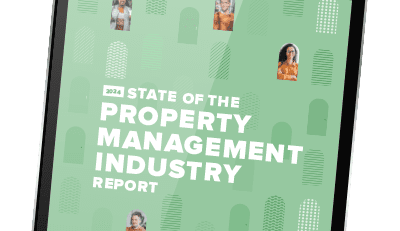It’s been talked about for many years; but green, sustainable residential buildings seemed confined to brand-new, higher-end, yuppie-oriented complexes—a market that has precious little to do with the reality of most property managers.
Those days are over.
Certified green, sustainable building design is becoming a reality across the country, for all kinds of markets and at nearly all price points. This is thanks to a series of financial innovations from key institutions, both public and private, in addition to a Great Awakening among increasingly environmentally aware consumers.
5 Exciting Trends Defining Green Building Design
#1: Follow the Money
Green financing exploded in 2016, and all indications are that the financing boom funding green/sustainable construction will continue throughout 2017 and beyond. According to a recent report from Morgan Stanley, annual energy efficiency investments now total roughly $130 billion—a figure that’s expected to increase to $385 billion by the year 2030.
Freddie Mac, Fannie Mae, the Small Business Association, and the Department of Housing and Urban Development all put the pedal to the metal last year. For example, the two quasi-government mortgage corporations funded $3.2 billion in green loans.
Fannie Mae’s Green Financing program exceeds $1.2 billion. Under their Green Rewards, Green Preservation Plus, and Green Building Certification programs, borrowers can get a lower interest rate and more loan proceeds. For example, Fannie Mae will pay 100% of energy and water audit report costs.
Not to be outdone, Freddie Mac’s Green Advantage Program lets those with green properties qualify for mortgage rate reduction, amounting to between 10 and 40 basis points—and that’s just to name one benefit available to green-conscious landlords. Other financial incentives, such as solar power purchase agreements (PPAs), on-bill financing, and other financial innovations, are making embracing green building practices and materials much more accessible. Making the move is much more realistic for operators of multi-family high-rises, as well as other developers and associations, than it was even just 2 or 3 years ago.
#2: Emphasis on Retrofitting
While new buildings are dominating magazine covers, green construction leaders and their counterparts in the finance industry are pivoting to retrofit existing structures. According to the 2016 Building Trends SmartMarket Report, 43% of U.S. respondents report that they expect to be working on a green building retrofit within the next 3 years.
One key development that will drive the move to retrofit thousands of existing buildings is the new LEED v4 rollout. This new set of standards is far friendlier to existing multi-family units. Launched at the United States Green Building Council conference in 2014, LEED v4 is now beginning to have an impact in the multifamily residential space.
Learn 5 exciting trends driving green building design on the #BuildiumBlog! Click To Tweet#3: Green Building Design Will Become the Norm
In 2015, about 24% of U.S. builders reported that green building projects represented 60% of their portfolios or more. Currently, green projects represent 33% of building projects in the United States. By 2018, that figure is expected to reach 39%, according to Building Trends. In Mexico, green initiatives will comprise 60% of projects for 44% of builders. In India, it’s going to hit 51%; and in South Africa, a whopping 61%.
#4: Demand for Green Housing Will Increase
It’s already happening. 52% of builders, architects, and home designers surveyed cite client demands as a top 3 factor driving their push into green construction initiatives, with 28% citing market demands.
An additional 30% cite market regulations, 26% cite lower operating costs, and 31% say “it’s the right thing to do.” Only 30% cite environmental regulations as a key factor in propelling the trend toward green construction projects.
#5: Boomer & Millennial Demand Driving Green Amenities Push
Baby Boomers are hitting their retirement years now, and they’re increasingly splitting the rental market with Millennials. Both groups are keenly focused on environmental issues; they want to save money, but they also want to contribute to a sustainable environment.
Studies show that energy efficient lighting is near the top of the list of common updates—which saves apartment complex operator money, too. The Department of Energy estimates that the annual energy cost of a 60-watt light bulb is nearly 5 times that of a 12-watt LED bulb.
Boomers also hold Energy Star-rated appliances in high regard. EnergyStar estimates that replacing a 10-year-old washer with a new model can save $135 per year, for example.
Other high-demand features include high-SEER air conditioning units, upgraded insulation materials, and programmable thermostats. According to a 2014 survey from J. Turner Research, multifamily residents rated the following green amenities and features on a scale of 1-10, with 10 being most desirable:
- Energy efficient appliances: 8.33
- Walkability: 8.10
- Recycling: 7.76
- Sustainable energy sources: 7.13
- Low-flow toilets: 6.91
Residents also appreciate more visible green features, such as gardens and green walls. Overall, green technology and practices are becoming more and more important as a market differentiator—so get ahead of your competition, and help the environment at the same time.
Read more on Property Management Trends
